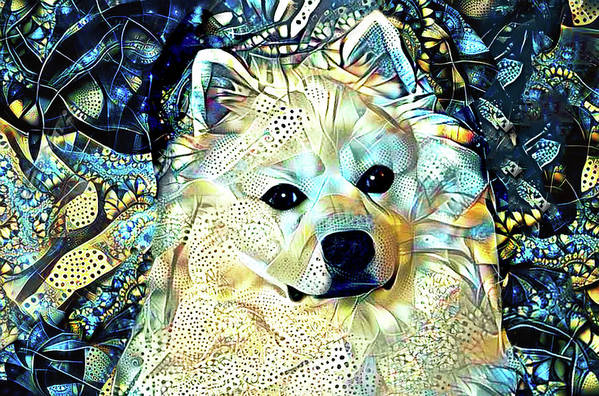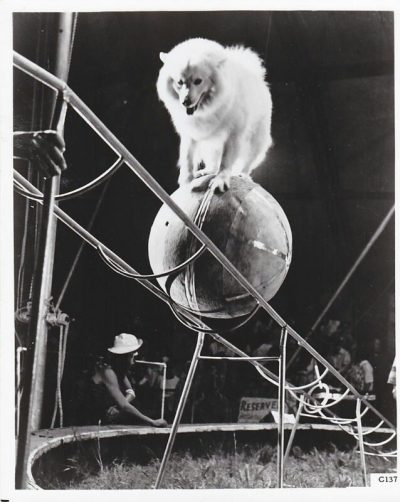
When German immigrants come to the United States, they brought with them small, white spitz dogs that were probably descendants of the white German Spitz, Volpino, or large white Pomeranians. Collectively, the dogs became known as American Spitzes (spitz, a German word translated as “sharp point”).

Image found on Pinterest and happily credited upon receipt of information
A good many Germans had settled in the American midwest because the areas look much like the German countryside, and there the dogs served as all around farm hands. Circus performers quickly discovered the clever, trainable, and highly agile dogs, and it was through some of the 100+ circuses that traveled the country that the general public saw them. One of the most famous dogs of all time was one such dog known as Pierre, the canine tightrope walker with the Barnum & Bailey Circus, (though other sources say the dog’s name was “Bido”).
It wasn’t until 1917 that the breed got the name by which we know it today, the American Eskimo Dog. Why the breed came to be so named isn’t known with certainty. Some sources claim that “American Eskimo” was picked to pay homage to an Ohio breeding kennel of the same name. Another theory is that these dogs looked like miniaturized versions of the Eskimos’ sled dogs (today we refer to the indigenous peoples inhabiting the Arctic regions of Greenland, Canada and Alaska as Inuit).
Perhaps the final authority would be the American Eskimo Dog Club of America which writes: “By 1924, there was considerable anti-German sentiment in the United States arising. Many of the German breeds were being chastised and discriminated against. UKC [United Kennel Club which had recognized the breed in 1913] changed the name of the breed to “American Spitz,” In 1925, the breed name was changed again to “American Eskimo Spitz”. This name was adopted from the kennel name of Mr. & Mrs. Hall who raised the Spitz along with a number of other breeds. Their kennel name was “American Eskimo Kennels”. In 1926, the “Spitz” was completely taken off the name; however, the breed was still referred to for many years as “Spitz” or ‘Eskimo Spitz.'”
This, then, confirms the role played by the kennel in the breed’s name.
Image: American Eskimo Dog by Peggy Collins is available as fine art, and in lifestyle and home decor items here.
